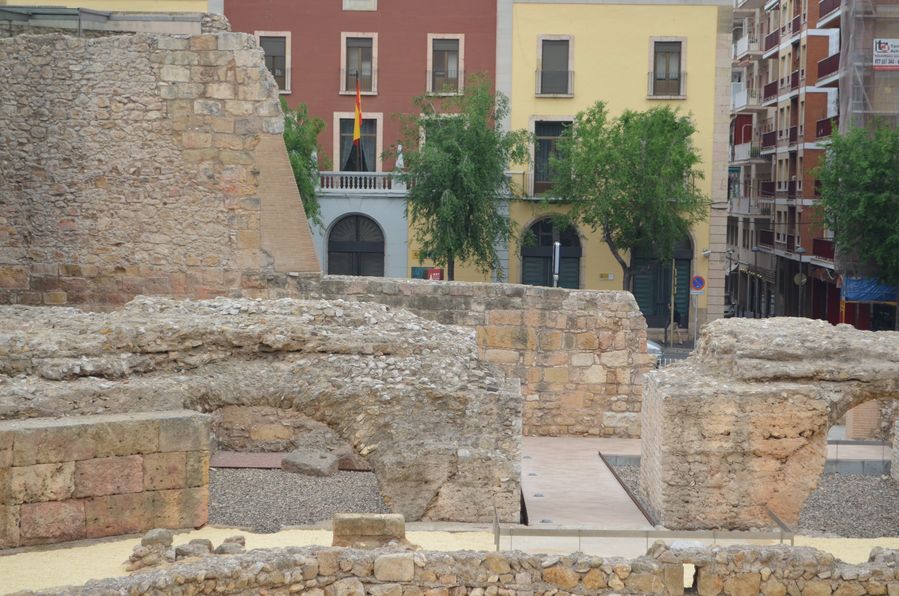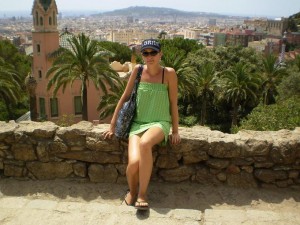20 Jun2016
21 things to know about Tarragona
I remember when I was a kid obsessed with a childish dream of becoming an archaeologist that probably the first Spanish place I’ve heard of was Tarragona. And no wonder as Tarragona was like Rome but in Spain.
After I studied in Madrid back in 2005 for half a year, instead of visiting Tarragona we chose to spend a month sunbathing in Malaga in the South. And for some reason, not even revisiting my favorite city Barcelona almost every year gave me a chance to go to this Mediterranean port located not so far away. Only after TBEX travel blogging conference in Lloret de Mar I was invited on a day trip to explore Tarragona. Finally!




21 things to know about Tarragona:
1. The Roman walls in Tarragona were claimed the UNESCO Heritage Site but not the rest of the town.
2. Tarragona is the capital of the region with the same name. Its name comes from tarracon which sounds Greek.
3. Tarraco Viva at Palau Firal I de congressos de Tarragona exhibition has been there since 2014 and was done for the 2,000th anniversary of Augustus death.
4. “The Romans used to say spring never ends in Tarragona.” And they were right as the temperature doesn’t really go down very much.
5. You can take a city tour on electric bikeswith Ebiketours.cat – that’s what we did. The tour we had usually lasts around 2 hours when the guide tries to explain more about the city than on a one day walking tour. We started in the Upper part of the Old Town 4 m above the Roman ruins. The round-shape tower is looking very Medieval.
6. Augustus came to Tarragona 3 times and the third was when he was the young Emperor in 27 and 26 BC. He loved there for a couple of years. He decided that Tarragona had to be the capital of North of Spain so they built an acropolis, big forum and a long circus for 30,000 people.
7. Augustus died on the 19 August 14 AD in his bed surrounded by his people asking ”did you enjoy the show? Did I perform well?” After his death they started to build the circus (was finished in 96 AD), forum (73 AD) and the temple (50 AD). Later on the Amphitheatre was built as well.
8. Since the Middle Ages new buildings were built on top of the Roman ruins. ”If we have something in Tarragona that’s a city on top of another city.” said our guide.
9. Now about 1,000 people live on top of the Roman circus.
10. The houses in the Middle Ages were built against the Roman walls.
11. The huge Roman Square is the forum of the province which is of 400 x 200 metres.
12. The Romans ruled in Tarragona for 700 years and around 40,000 inhabitants lived in there at that time. Then it was officially empty for 4 centuries until 1118. It was repopulated and in the end of 12th century they started to build the Cathedral which was almost finished in 1331.
13. The Cathedral was built in the Middle Ages, it combines Romanesque and Gothic elements from the 12th and 13th century and its floor was excavated only in 2012. Underneath there was a smaller Visigothic church and a Moorish mosque in the past. 1348 was the year of the Black Death, the plague so since then the front of the cathedral was never finished. Now we can see 3 levels of the Roman buildings in here. In 1905 the Cathedral was declared a national monument. It’s open for visitors from 10 am till 7 pm. There’s a lot of lovely restaurants around. At the Civil War the city was bombarded but the Cathedral was left untouched.
14. When walking along a side street close to the Cathedral you can see tomb stones with engraved Hebrew letters from the Jewish communities. Many people started to collect Roman objects found around the town and then put them in front of their houses to show prestige. The tomb stones were one of them.


15. The Tarragona amphitheatre was one of the 230 the Romans built around Europe.
16. It Roman forum was very small Medieval city with just 6,000 people living here. Nowadays, around 3,000 inhabitants live inside the walled Roman circus and forum. Tarragona has more than 132,000 inhabitants altogether.
17. The amphitheatre served for gladiator fights and animal hunting and many people were killed there. It was the dark side of the Roman society. Up to 14,000 people could sit at the amphitheatre and watch the fights. Something particular found there is the Santa Maria del Miracle church (Holy Mary of the Miracle) built by the Christians 1,000 years later in the 12th and 13th century. It was blown up in around 1915.
18. So many different buildings are now situated on top of the ruins – a church, a Roman temple, a Normand Gothic church, a convent, a hospital and finally a prison. The prisoners were there to build the la Rambla street and then the place was abandoned.
19. In 1853 an American multimillionaire William J. Bryan for Vermont bought the amphitheatre and gave it to the city. In 1970’s they invented the part of the amphitheatre that looks finished now.
20. Ironically, in 1701 the British came here so we can see some English forts that were build to defend the city from the Spaniards.
21. Tarragona has not only Roman ruins and las Ramblas streets, but a fishing port and very nice beaches. Nowadays, there’s 2,500 beds in Tarragona hotels and just close-by another 8,000 camping places for tourists on the coast.






More photos can be found in my Tarragona photo album :)
And if you are into history, read also about 2,500-year-old Iberian village Calafell situated not that far from Tarragona.
My trip to Tarragona Spain was a press trip. For more information, visit Calafell tourism website and Costa Daurada to see what other things you can do in the area. If you need a guy around Costa Daurada, check out Paco or his co-workers from Argos Serveis Culturals.










Xplorato
| #
honestly speaking i have never heard of tarragona but i must say i wouldn’t mind exploring the location :) thanks for sharing